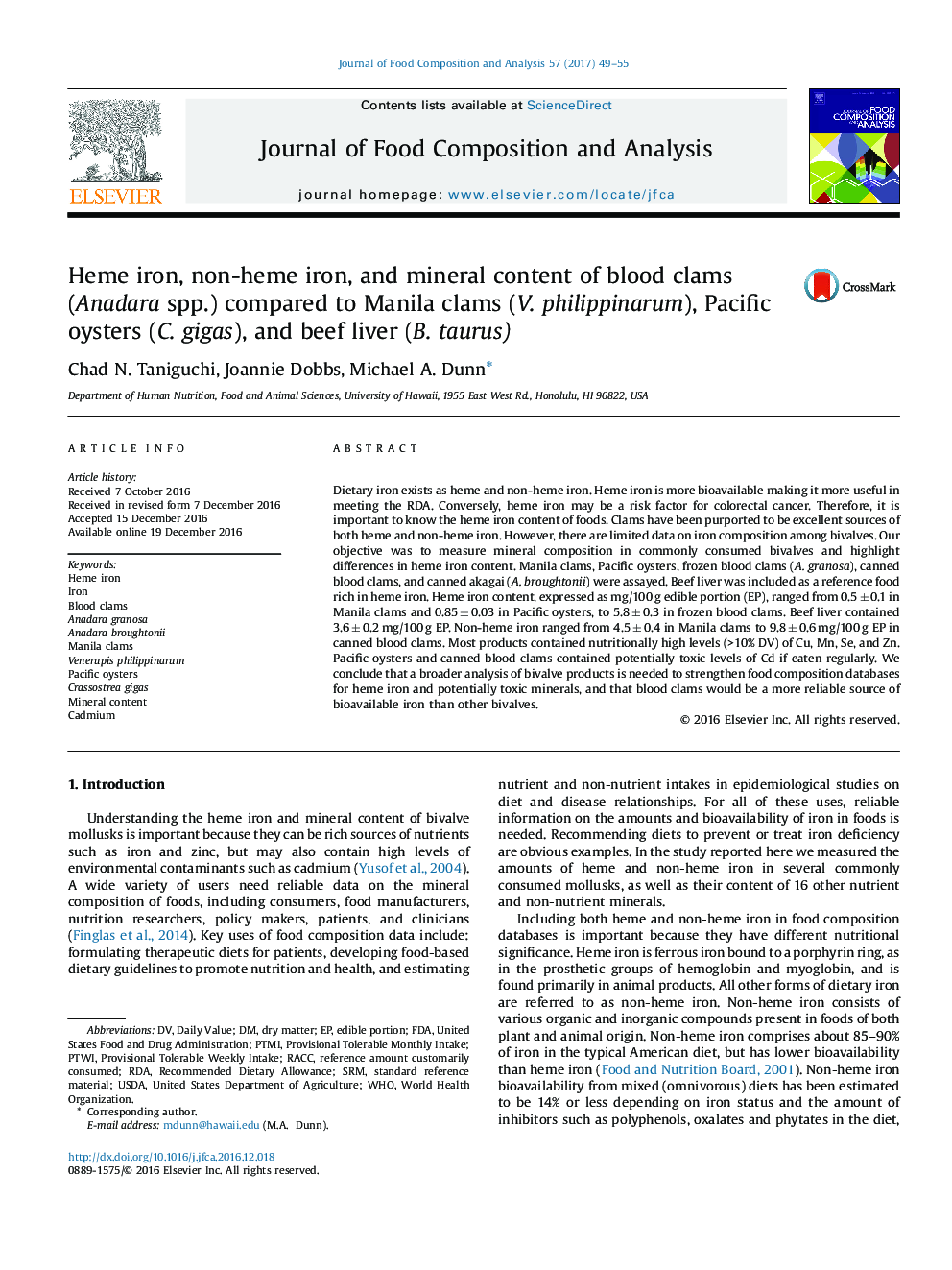| کد مقاله | کد نشریه | سال انتشار | مقاله انگلیسی | نسخه تمام متن |
|---|---|---|---|---|
| 5137003 | 1494485 | 2017 | 7 صفحه PDF | دانلود رایگان |

- There is very little information on the heme iron (Fe) content of bivalve mollusks.
- Heme Fe content was 10-fold higher in blood clams (Anadara spp.) than in Manila clams.
- Heme Fe was 7-fold higher in blood clams than in oysters, and 1.6-fold that in beef liver.
- Potentially unsafe levels of Cd were found in Pacific oysters and canned blood clams.
- Anadara species may be unique among bivalves as a rich source of heme Fe.
Dietary iron exists as heme and non-heme iron. Heme iron is more bioavailable making it more useful in meeting the RDA. Conversely, heme iron may be a risk factor for colorectal cancer. Therefore, it is important to know the heme iron content of foods. Clams have been purported to be excellent sources of both heme and non-heme iron. However, there are limited data on iron composition among bivalves. Our objective was to measure mineral composition in commonly consumed bivalves and highlight differences in heme iron content. Manila clams, Pacific oysters, frozen blood clams (A. granosa), canned blood clams, and canned akagai (A. broughtonii) were assayed. Beef liver was included as a reference food rich in heme iron. Heme iron content, expressed as mg/100 g edible portion (EP), ranged from 0.5 ± 0.1 in Manila clams and 0.85 ± 0.03 in Pacific oysters, to 5.8 ± 0.3 in frozen blood clams. Beef liver contained 3.6 ± 0.2 mg/100 g EP. Non-heme iron ranged from 4.5 ± 0.4 in Manila clams to 9.8 ± 0.6 mg/100 g EP in canned blood clams. Most products contained nutritionally high levels (>10% DV) of Cu, Mn, Se, and Zn. Pacific oysters and canned blood clams contained potentially toxic levels of Cd if eaten regularly. We conclude that a broader analysis of bivalve products is needed to strengthen food composition databases for heme iron and potentially toxic minerals, and that blood clams would be a more reliable source of bioavailable iron than other bivalves.
Journal: Journal of Food Composition and Analysis - Volume 57, April 2017, Pages 49-55